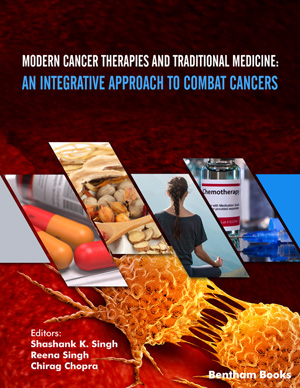
Abstract
Background: Hepatoma is a high morbidity and mortality cancer, and coagulation is a potential oncogenic mechanism for hepatoma development.
Objective: In this study, we aimed to reveal the role of coagulation in hepatoma.
Methods: We applied the LASSO to construct a coagulation-related risk score (CRS) and a clinical nomogram with independent validation. The heterogeneity of various aspects, including functional enrichment, SNV, CN, immunocyte infiltration, immune pathways, immune checkpoint, and genomic instability indexes, was evaluated. Besides, the prognostic value of the CRS genes was tested. We selected the critical risky gene related to coagulation from the LASSO coefficients, for which we applied transwell and clone formation assays to confirm its roles in hepatoma cell migration and clone formation ability, respectively.
Results: The CRS and the nomogram predicted patients’ survival with good accuracy in both two datasets. The high-CRS group was associated with higher cell cycle, DNA repair, TP53 mutation rates, amplification, and lower deletion rates at chromosome 1. For immunocyte infiltration, we noticed increased Treg infiltration and globally upregulated immune checkpoints and genomic instability indexes. Additionally, every single CRS gene affected the patient’s survival. Finally, we observed that RABIF was the riskiest gene in the CRS. Its knockdown suppressed hepatoma cell migration and clone formation capability, which could be rescued by RABIF overexpression.
Conclusion: We built a robust CRS with great potential as a prognosis and immunotherapeutic indicator. Importantly, we identified RABIF as an oncogene, promoting hepatoma cell migration and clone formation, revealing underlying pathological mechanisms, and providing novel therapeutic targets for hepatoma treatment.
[http://dx.doi.org/10.1056/NEJMra1713263] [PMID: 30970190]
[http://dx.doi.org/10.1016/S0140-6736(18)30010-2] [PMID: 29307467]
[http://dx.doi.org/10.5582/bst.2021.01091] [PMID: 34039818]
[http://dx.doi.org/10.1038/s41571-021-00573-2] [PMID: 34764464]
[http://dx.doi.org/10.1111/jth.12075] [PMID: 23279708]
[http://dx.doi.org/10.1038/s41598-017-14087-4] [PMID: 29061995]
[http://dx.doi.org/10.1002/(SICI)1097-0258(19970228)16:4<385::AID-SIM380>3.0.CO;2-3] [PMID: 9044528]
[http://dx.doi.org/10.1016/j.celrep.2016.12.019] [PMID: 28052254]
[http://dx.doi.org/10.1016/j.immuni.2013.07.012] [PMID: 23890059]
[http://dx.doi.org/10.1038/s41467-017-02391-6] [PMID: 29295995]
[http://dx.doi.org/10.1038/nmeth.3337] [PMID: 25822800]
[http://dx.doi.org/10.1186/s13059-016-1070-5] [PMID: 27765066]
[http://dx.doi.org/10.1186/s13059-016-1028-7] [PMID: 27549193]
[http://dx.doi.org/10.1186/s13059-017-1349-1] [PMID: 29141660]
[http://dx.doi.org/10.7554/eLife.26476] [PMID: 29130882]
[http://dx.doi.org/10.1186/s13073-019-0638-6] [PMID: 31126321]
[http://dx.doi.org/10.1016/j.immuni.2018.03.023] [PMID: 29628290]
[http://dx.doi.org/10.1155/2021/7840007] [PMID: 34394352]
[http://dx.doi.org/10.1016/j.phrs.2022.106220] [PMID: 35405309]
[http://dx.doi.org/10.3389/fonc.2021.620912] [PMID: 34249676]
[http://dx.doi.org/10.1016/j.canlet.2018.02.010] [PMID: 29432845]
[http://dx.doi.org/10.7150/thno.53227] [PMID: 33391541]
[http://dx.doi.org/10.1002/hep.28397] [PMID: 26660154]
[http://dx.doi.org/10.1055/s-2008-1079258] [PMID: 18645923]
[http://dx.doi.org/10.1172/JCI930] [PMID: 9525979]
[http://dx.doi.org/10.1038/sj.onc.1207066] [PMID: 14724569]
[http://dx.doi.org/10.1016/S0049-3848(20)30406-0] [PMID: 32736766]
[http://dx.doi.org/10.3389/fonc.2021.738607] [PMID: 34881176]
[http://dx.doi.org/10.1007/s00262-019-02427-4] [PMID: 31724091]
[http://dx.doi.org/10.3389/fimmu.2022.895961] [PMID: 36003402]
[http://dx.doi.org/10.1186/s13045-022-01283-7] [PMID: 35585646]






















